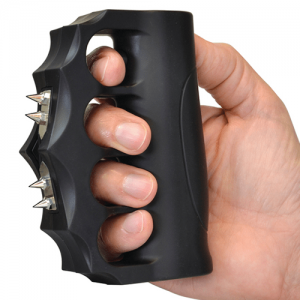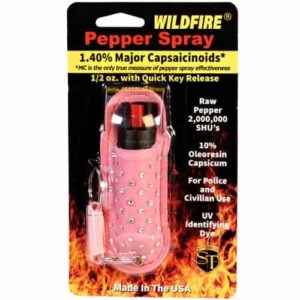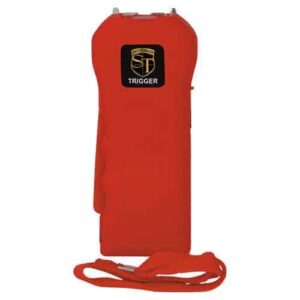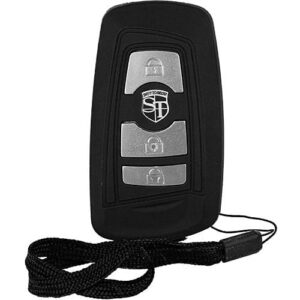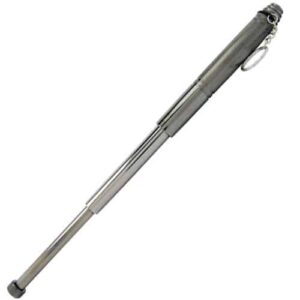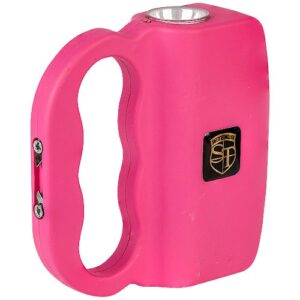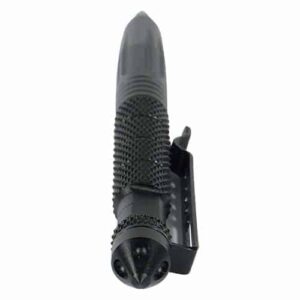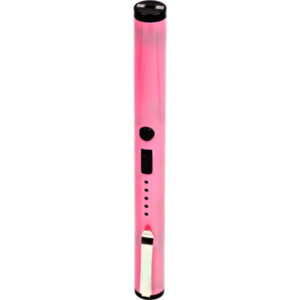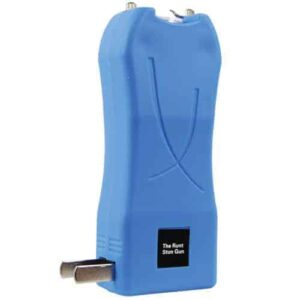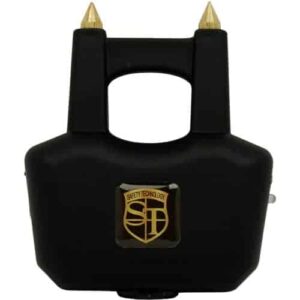Imagine this: You’re out for your regular evening stroll, and out of nowhere, an aggressive dog starts approaching you. It’s a situation no one craves, and that’s where “Pepper Spray for Dogs” becomes your vital safety tool. This article will elaborate on why it’s the right protective gear you should never leave home without, how to use it correctly, and what to expect after spraying a dog. So by the end of the article, you’ll feel more informed and assured while taking your evening strolls or morning jogs.
Table of Contents
ToggleWhy Use Pepper Spray for Dogs?
Choosing the ideal self-defense tool to protect against dog attacks can be challenging, especially when you wish to cause the least harm possible. This is where pepper spray for dogs comes in handy.
Effectiveness of Pepper Spray
Pepper spray is highly effective in deterring aggressive dogs. It uses a chemical compound known as capsaicin, derived from chili peppers, to temporarily incapacitate the dog and give you time to escape. Importantly, it doesn’t injure them permanently.
Non-lethal Option
One of the key reasons to use dog pepper spray is that it’s a non-lethal option. It causes temporary discomfort and disorientation without leading to long-lasting harm or injury. Pepper spray for dogs is designed to deter an attack, not to inflict harm or injury.
Legal Considerations
Before choosing to use pepper spray for dogs, it’s crucial to understand the legal parameters in your locality. While it’s generally legal in most places, some areas might have restrictions or might require a permit.
Types of Pepper Spray for Dogs
Pepper spray for dogs comes in a variety of formulations. Understanding these can help you choose the right product to suit your needs.
Spray Cans
Spray cans are the most common form of pepper spray. They are light, portable, and easy to use. Most spray cans have a range of about 10-12 feet, giving you a safe distance from the potential threat.
Gel-based Products
Gel-based dog pepper sprays work similarly to spray cans but have a denser consistency. This type offers more accuracy but could take a moment longer to have an effect.
Foam Products
Foam products spray out as a thick foam rather than a mist. It adheres to the dog’s face, making it difficult for them to see and breathe, thereby deterring an attack.

Factors to Consider When Choosing Pepper Spray for Dogs
When selecting a pepper spray, consider the following:
Active Ingredient
Most pepper sprays for dogs contain capsaicin derived from chilis. However, some products might have additional ingredients. Always ensure the product is safe for use on dogs.
Spray Range
Consider the spray range of the product. It’s best to choose pepper spray that can be sprayed from a distance, which ensures your safety while deterring an attacking dog.
Ease of Use
Choose a product that is easy to use, especially if you’re in a stressful situation. Go for products with simple mechanisms like push-button sprays.
Safety Features
Look for pepper sprays that come with safety features to prevent accidental discharge.
Storage and Shelf Life
Consider the storage requirements and the shelf life of the product. Pepper sprays have an expiry date, after which they may become less effective.
How Does Pepper Spray Work on Dogs?
Pepper spray works by temporarily incapacitating dogs without causing permanent damage.
Effect on Canine Senses
The active ingredient in pepper spray, capsaicin, causes intense discomfort and temporary blindness when it comes into contact with the dog’s eyes, nose, and mouth.
Physical Effects on Dogs
Capaicin triggers an immediate inflammatory response, causing the dog’s mucous membranes to swell. This results in difficulty seeing and breathing, deterring the attack.

Proper Use of Pepper Spray for Dogs
Correct usage can maximize the efficiency of dog pepper sprays.
Self-defense Techniques
In case of a dog attack, aim the pepper spray at the dog’s eyes and nose and spray. Do not spray excessively; short bursts are usually sufficient.
Avoiding Wind Direction
Avoid spraying against the wind as it can cause the spray to get in your eyes or spread inconsistantly.
Dos and Don’ts
Do ensure to maintain a safe distance before using the spray. Don’t use the spray on non-threatening dogs or as a training tool.
Alternatives to Pepper Spray for Dog Deterrence
If you’re uncomfortable using pepper spray, consider these alternatives:
Ultrasonic Devices
These devices emit a high-pitched sound that humans can’t hear but dogs find unbearable.
Citronella Spray
Citronella is a non-toxic alternative to capsaicin. It produces a smell that dogs dislike, thus deterring them.
Water Spray Bottles
A simple squirt of water in the face can surprise a dog enough to deter an attack.

Potential Risks and Limitations of Pepper Spray for Dogs
While pepper spray is an effective deterrent, it has its downsides.
Adverse Effects on Humans
If used incorrectly, the spray can affect humans. Wind can blow the spray into your eyes or mouth, causing temporary discomfort.
Risk of Overuse
Overusing pepper spray may cause more harm than necessary to the dog, and some dogs may become immune to the effects over time.
Not Suitable for All Breeds
Certain breeds, due to their size or tolerance, may not be as affected by pepper sprays.
Training and Responsibly Using Pepper Spray for Dogs
Training Considerations
Before carrying pepper spray, practice the usage to ensure you’re prepared in case of an attack.
Legal and Ethical Responsibilities
Always understand your ethical responsibility when using pepper spray. They should only be used in case of personal danger and never to harm or punish a dog unnecessarily.

Pepper Spray for Dogs: Frequently Asked Questions
Let’s answer some common inquiries regarding pepper sprays for dogs.
Is Pepper Spray Harmful to Dogs?
In small controlled amounts, pepper spray can cause discomfort without causing lasting harm to dogs. It should never be used regularly or excessively.
What Should I Do if My Dog Gets Sprayed?
If your dog gets sprayed accidentally, immediately wash their face with water and mild soap. Consult a vet for further instructions.
How Far is the Effective Range of Pepper Spray?
Most dog pepper sprays have a range of about 10-12 feet.
How Long Does Pepper Spray Last?
The effects of pepper spray last for about 15-45 minutes depending on the breed and tolerance of the dog.
Conclusion
Pepper spray for dogs is an effective, non-lethal self-defense tool to deter aggressive dog behavior. While choosing a product, consider the active ingredient, spray range, ease of use, and additional safety features. As always, use these products responsibly and ethically and familiarize yourself with local regulations. Alternatives like ultrasonic devices, citronella spray, and water spray bottles also exist for those uncomfortable with the use of pepper spray.



